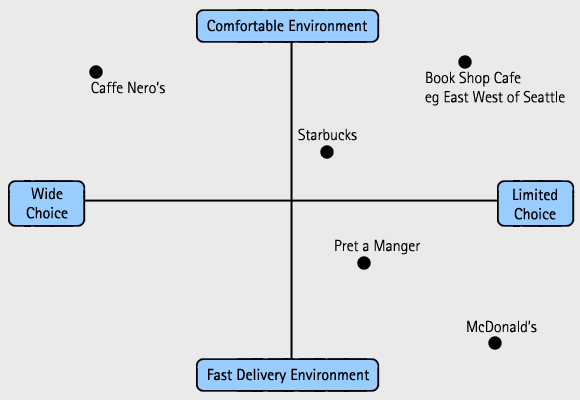| Positioning of a brand means emphasising its distinctiveness
based on characteristics that are relevant to the potential/ actual
customer. One way to start this process is the answer the following
questions about your brand.
- What is the brand for?
- Who is the brand for?
- When is the brand for?
- Who is the brand competing directly with?
Here's an example to illustrate:
A company has decided to launch a new theme park just outside
Bristol and addresses these questions to help it position itself
more clearly.
1. The brand is for entertainment of the 'high thrills and spills'
variety
2. The brand is primarily for older children and adults up to
about 40 years old who live within a 60-mile radius of the location
3. The brand is for all year round, the design of the park and
rides allows for excellent weather protection
4. The brands main competitors are nationally recognised theme
parks like Alton Towers
 |
| Heather
Moore, Marketing and Promotions Officer
Marwell Zoo, Hampshire |
|
 |
Perceptual brand maps
An excellent tool to help understand brand positioning is positioning
or perceptual mapping. Brands occupy a space in a consumer's mind
whilst other brands compete within that space. Given that consumers
use specific criteria to evaluate a set of brands (depending on
what they value) we can put these two elements together and produce
a brand 'map'.
We have drawn up an imaginary positioning map for the ‘out
of home coffee marketplace
| Figure 10.1 Positioning map for
coffee marketplace |
|
 |
This positioning map is suggesting that two of the important
criteria used by consumers when making judgements in this marketplace
are the type of environment created in the premises and the range
of coffee's on offer. It has then plotted a number of brands (bookshop
cafes being a variety of individual brands) by judging where they
would be positioned in a consumer's mind when considering these
two criteria.
We can see that McDonalds is considered the fastest delivery
environment but with very limited choice whilst Caff» Nero creates
a much more relaxing environment in which to choose and consume
one of the many different coffee's offered. This is not to say
one is better than the other just different. Consumers make their
preferences known by deciding which to frequent.
The important issues concerning positioning maps for brand owners
are as follows.
1. It helps you spot gaps in the marketplace.
2. It helps you to see if you are launching into a crowded marketplace.
3. It helps you to understand who your closest competitors are.
4. It helps you to appreciate the most important criteria customers'
use when 'positioning' different brands in their mind.
As a result of this it helps inform decisions being made about
an organisations marketing activities. For any major decisions
being made it can be asked, what is the likely effect of this
action on the current position of our brand and is this a wise
move? Of course its more complex than this perceptual map shows
because any change in one element is likely to have knock on effects
on other elements. Each time McDonalds increases its range the
chances are the speed of service is reduced.
Branding critique
As you may have gathered by reading the Branding section,
the concept itself is rather transitory and elusive. It can be
rather vaguely defined at times and so people are not really sure
what is being talked about when the word branding is used. A marketing
perspective here suggests any use of the term must in large part
be determined by how consumers view branding, it is after all
a perceptual concept. That is to say it is based largely on what
people think it is.
Some argue that branding has become so powerful in modern western
societies that people place too much importance on what are really
quite trivial things like labels and styles. In this sense brands
are seen as inducing fantasy and delusion particularly among the
more susceptible elements of society (i.e. children).
So brands, to some extent, may mislead us by making us believe
they have wonderful abilities from making us look younger to making
us feel happier. This raises ethical considerations which marketers
increasingly need to address as consumers get more knowledgeable
and more discerning. See the Nologo website for
more ethical issues involving marketing.
Another concern raised about branding is the difficulty all organisations
encounter when trying to measure the value of a brand to them.
If they measure sales and profits are they not just measuring
the value of the product or service itself? What additional value
is there in making a product into a strong brand? In recent years
some measurement systems have been introduced but many of these
are very complex and remain subjective. If Sheraton Hotels is
ever sold just how much of the price is attributed to the physical
buildings and how much to the name Sheraton?
 |
| Jon
Weaver, Marketing Manager, Bournemouth
Borough Council |
|
 |
|

